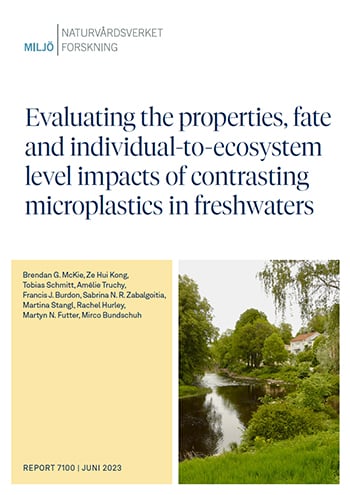Evaluating the properties, fate and individual-to-ecosystem level impacts of contrasting microplastics in freshwaters
About report
Microplastic particles are fragments, fibres and other shapes derived from plastic polymers. Concern about the environmental impacts of microplastic particles and their implications for human wellbeing has never been higher. Unfortunately, the understanding of the dynamics and impacts of microplastics in the environment lags behind.
Freshwater ecosystems are vulnerable to inputs of plastic waste from storm water and other terrestrial runoff. Despite this, research on the behaviour and impacts of microplastic particles in freshwater ecosystems, and their capacity to act as key transport pathways through the landscape from inland to the ocean, is especially deficient.
This report presents results of one of five funded research projects within the call Microplastics 2018. This project addresses the environmental interaction of microplastic particles in streams and the ecological impacts of microplastic particles on resource consumption, growth and survival of organisms and on key ecosystem processes.
One key result in the project is that almost all microplastic shapes and polymers studied had one or more effects om stream microbial organisms and associated ecosystem processes. The research also provide evidence that effects on microbial organisms can propagate up food-chains to affect consumer growth and fat storage.
The project has been funded by the Swedish EPA’s environmental research grant, which aims to fund research in support of the Swedish EPA and the Swedish Marine and Water Authority’s knowledge needs.
